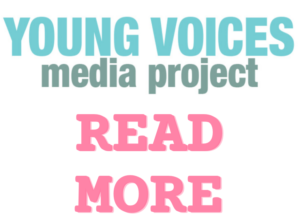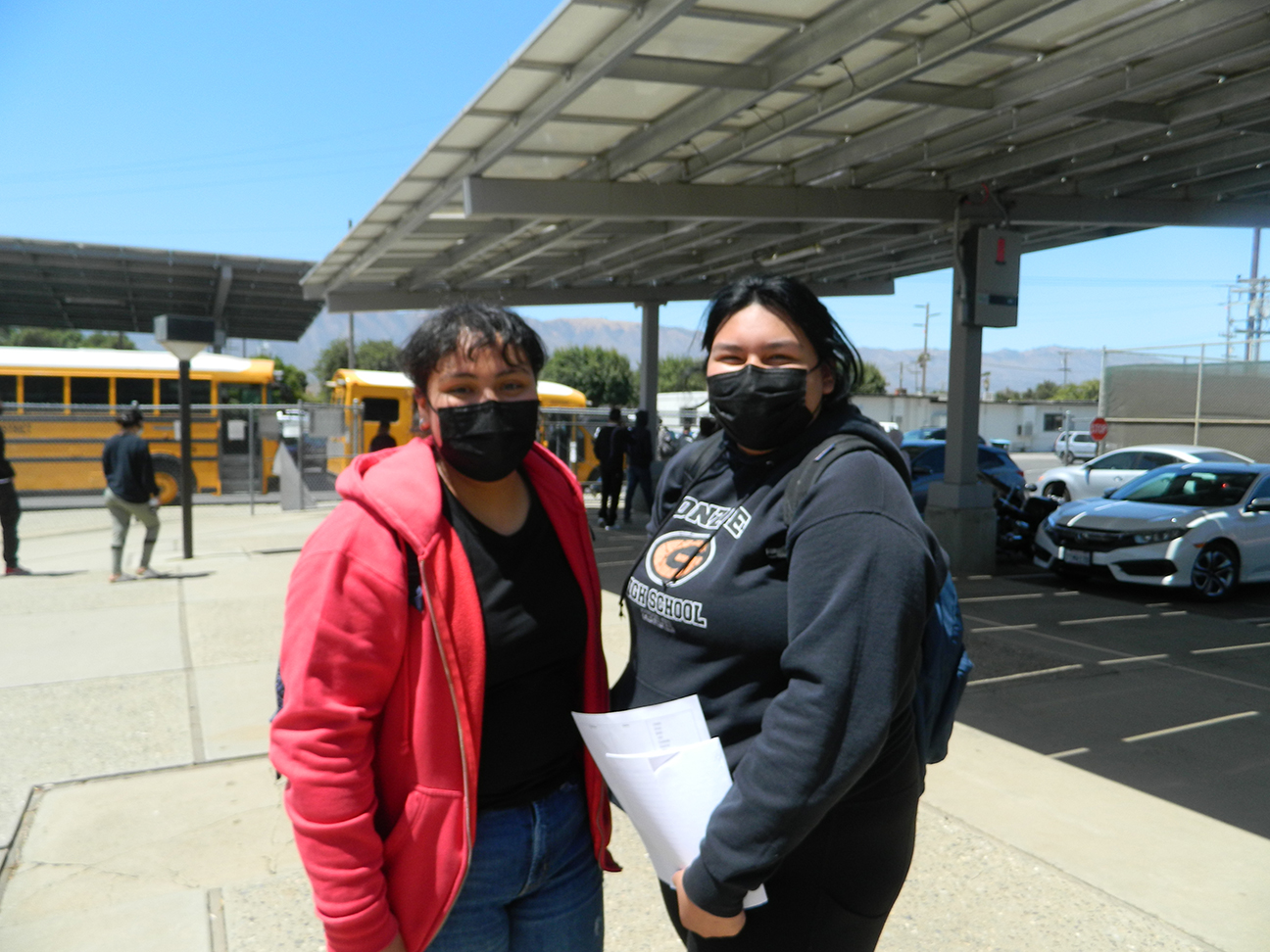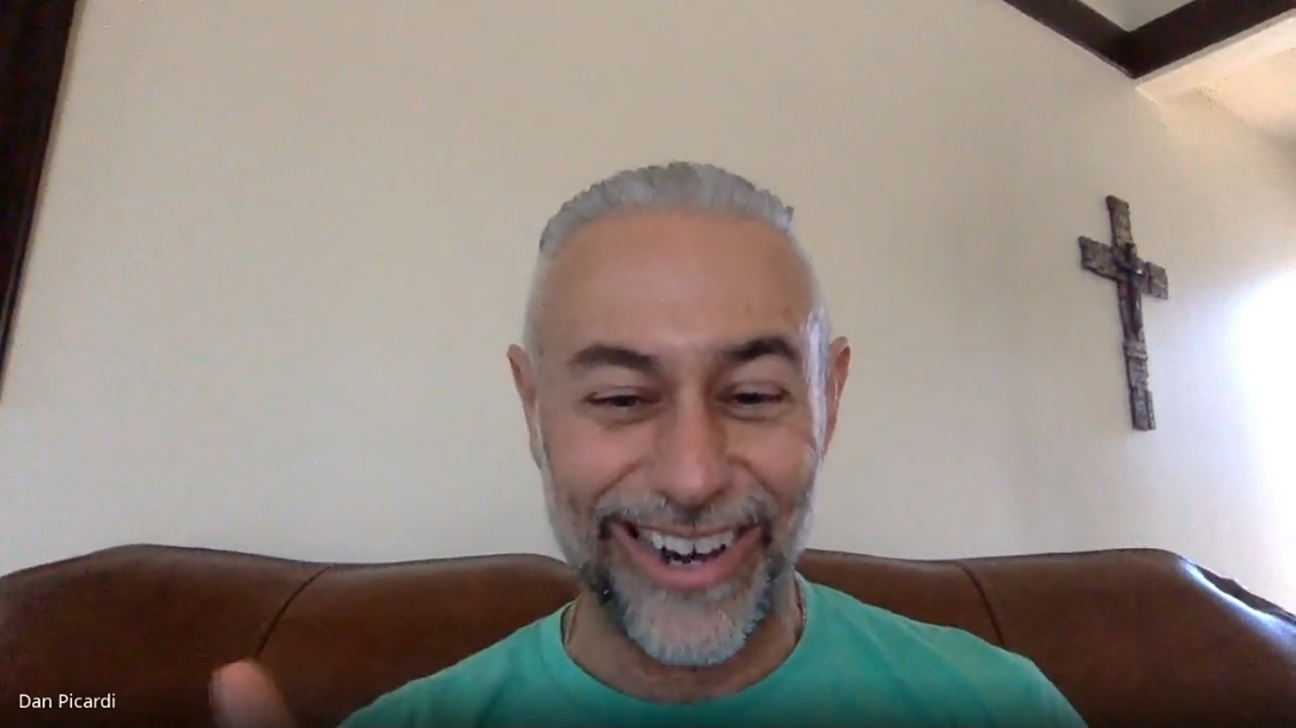Summer school rally at Gonzales High | Photo by Angela Rodriguez
| YOUTH BEAT
By Angela Rodriguez
It is morning at Gonzales High.
The cold air bites at students’ noses, and they huddle together in groups to keep warm. Gaggles of teenagers spread throughout campus, permeating the entire school with chatter and sporadic laughter.
The school is full.
It’s summer, yet it seems like the fall semester has begun.
How did so many students end up in summer school?
“It felt impossible to pass,” incoming senior Dulce Regalado said. “At one point, I felt like no matter what I did, I was just going to fail.”
Regalado is attending the second session of summer school to make up English credits. She said that by the time the second semester of the 2020-21 school year rolled around, she had “no motivation left.”
“It was a lot. I couldn’t focus at home because of the noise, and I ended up doing all my work in the middle of the night when everyone was asleep,” she said.
Clarissa Jimenez, another incoming senior, agreed that school was much more difficult during the pandemic. “It was hell,” she said.
 The pandemic forced all students in Monterey County—and many parts of the world—to shelter in place to keep COVID-19 from spreading. State and national leaders urged schools to continue working and provided millions of dollars to help provide equipment and internet access for remote instruction. But many of the challenges students faced had little to do with connectivity. In Gonzales, an agricultural community with a large Latino population, the challenges students faced were more related to their housing situation, their ability to find a quiet space to work, and in some instances, international travel.
The pandemic forced all students in Monterey County—and many parts of the world—to shelter in place to keep COVID-19 from spreading. State and national leaders urged schools to continue working and provided millions of dollars to help provide equipment and internet access for remote instruction. But many of the challenges students faced had little to do with connectivity. In Gonzales, an agricultural community with a large Latino population, the challenges students faced were more related to their housing situation, their ability to find a quiet space to work, and in some instances, international travel.
As a result, many students faced mental health challenges. But at least one teacher demonstrated that connecting with students could help ease their burdens.
Jimenez, like other students at Gonzales, was learning virtually while in Mexico for part of the school year.
Enlarge

Gonzales has many migrant families that go to Mexico during the winter. Last year, some families took the pandemic as an opportunity to go back home, for one reason or another, and this took a toll on the children they brought with them.
“My grades were good at first,” Jimenez said. “But I got so stressed that, when my mom took me to Mexico, I just gave up. There was trouble with the internet connection, but to be honest, I just gave up.”
Jimenez’s case is not unique. Many students contacted for this story said they got good grades at first, but the pressure to keep up became too much, so they gave up. It was a trade-off: their grades suffered, but they needed a break for their mental health.
The biggest obstacle many students faced throughout virtual learning was the inability to separate home life from school life.
There were students in class while parents argued in the background. Students with parents working outside the home would be trying to learn while cooking breakfast for their younger siblings. Some students did not have a desk to work at, enough silence to focus, or the luxury of free time to study. Such conditions were enough to break a student’s will.
Perhaps a lot of the students now in summer school did not fail, but rather, they were failed by virtual learning.
“My parents work in the fields, so, while they were working, I had to take care of my little sister and my niece,” said Citlali “Charlie” Ruelas.
Carrying a responsibility that many women in working-class Mexican families bear, young women like Ruelas are asked to help maintain a household, whether it be through house chores or caring for children in the family.
“It was hard to do work while babysitting,” Ruelas said. “I had to give all my attention to taking care of my sister or niece, and I couldn’t focus. It was my worst academic year by far. I was so sad and so disappointed in myself. The hardest thing was facing my mom because I just want to make her proud, but it was so hard to not fail.”
Enlarge

Despite so many obstacles, some of these students were able to pass Dan Picardi’s history classes.
Before the pandemic, many students considered Picardi’s class as their most difficult, with daily reading and weekly writing assignments. But “Picardi’s was definitely my favorite class. I had a consistent A or B throughout the year,” Regalado said.
Jimenez, who abandoned other classes due to stress, said Picardi’s class was the least stressful for her. “It was my best class.”
The class became a haven for students, thanks to Picardi’s upbeat attitude and understanding nature.
“I put the needs of my students above the curriculum,” said Picardi, who has taught at Gonzales High for more than 20 years. “I asked myself, what do students need to succeed?”
Picardi said students need a strong connection to their teachers. So he became more flexible with assignments and due dates and tried new methods of teaching to accommodate the online environment.
“I always say, I’m not in the education business, I’m in the relationship business,” Picardi said with a grin. “If we have a connection, you’re going to listen, you’re going to attend, you’re going to do the work.”
His method worked. Regalado laughed with surprise when she admitted, “Sometimes I would skip classes, but whenever I missed Picardi’s, I felt guilty, and I wouldn’t want to miss it again.”
Picardi trusted students to choose the dates for their exams, the times for their meetings, and organized students into groups for all assignments to promote collegiality. “The idea was that students would not be isolated, they would talk to each other and help each other out,” he said.
Janet Martinez-Angeles, a social worker and counselor for the Alisal Union School District, said in a presentation to Young Voices that one of the problems she saw students facing was feelings of isolation. “Virtual learning exacerbated students’ mental health by cutting them off from social interaction,” she said.
This is what virtual school robbed students of: no more chatter in passing periods, no more quick whispers of “What did she ask us to do?” or “Can you read over my paper to see if it’s OK?” No more support network. The bonds between students became fragile, just as their connection to school did.
For many, the isolation was overwhelming. But, as Picardi’s history class showed, connection over curriculum allowed students to find their way back to the mainland after being cast out into islands.
Virtual learning may not be over. Vaccination rates are increasing. Schools and businesses are opening up. But COVID case rates continue to fluctuate. The pandemic has taught us that the future is uncertain.
“I wouldn’t be surprised if we go on Thanksgiving break and don’t come back until January.” Picardi said.
Hopefully, students who struggled with virtual learning will improve with in-person instruction, And hopefully, schools are taking note of what worked and didn’t work this year.
Some student problems can’t be solved by the school, but issues with feeling disconnected or stressed can be remedied by some effort on the part of teachers.
Picardi’s example demonstrates that prioritizing connection over curriculum is a strategy for success.
Have something to say about this story? Send us a letter.